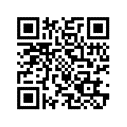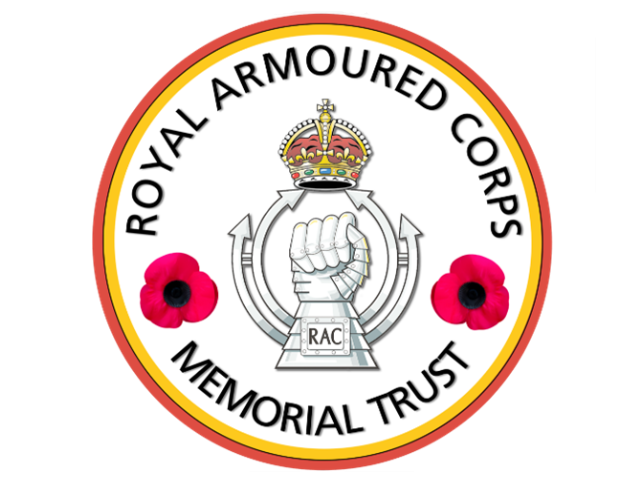
The Royal Armoured Corps Memorial Trust
A very informative article about the RAC Memorial Trust from the Chairman, John Colton. Published August 2023.
History of the RAC Memorial Trust
When the Royal Armoured Corps Memorial Trust was formed in 1946, the Corps consisted of no less than 82 individual units. 77 years on, that number has reduced to just 14 Regiments, including our four Yeomanry regiments, yet the role of the Trust remains as relevant and as important today as it ever was.
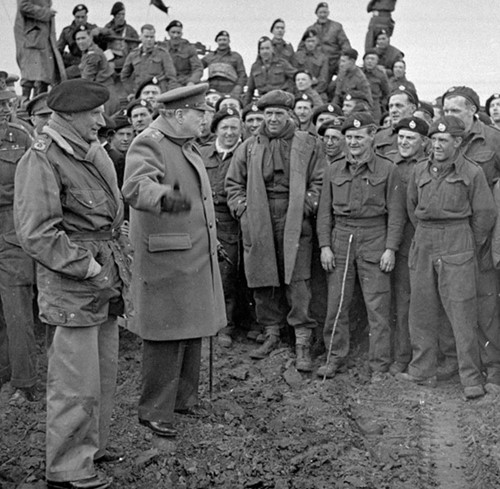
The original Trust objectives were enthusiastically endorsed by Sir Winston Churchill and Field Marshall Viscount Montgomery. They both recognised the scale of sacrifice and the contribution to victory made by those special soldiers who had fought through the Second World War in tanks and armoured recce.
Both Churchill and Montgomery became the original Patrons of the Trust. They signed a joint letter stating that there could be no better way to commemorate those who died in the fighting “than by sharing in the effort, begun by the serving members of the Royal Armoured Corps, to build up a strong and permanent fund which will care not only for those who have suffered as a result of the war but for those who, today and in the future, carry on the proud traditions of service of the men who have not come back.”
Our objectives remain unchanged to this day and are threefold:
- To help maintain the military efficiency and esprit de corps of the Royal Armoured Corps
- To support all members of the Royal Armoured Corps, both serving and retired, and their families, when in time of need
- To honour the memory of all those members of the Royal Armoured Corps who have died in the service of their country
What does the Trust do?
The Trust is run by a Board of volunteer Trustees, all of whom have served in or have had close connections with the Royal Armoured Corps at some point in their careers. We are honoured to have as our Patron HRH the Duke of Kent, who was commissioned into the Scots Greys in 1955 and served with them and the Royal Scots Dragoon Guards for 21 years.
The Trust serves all members of the Royal Armoured Corps and their families, irrespective of cap badge or rank. It is important to state that we do not compete with individual Regimental associations or charities. On the contrary we work closely with them to ensure that every member of the wider Corps family has the support that he or she needs.
Benevolence
Because of our very limited administrative resource, the Trust can only receive requests for benevolence support through a British Legion, SSAFA or similar case worker. In the majority of cases the application will have already been vetted by an individual’s Regimental welfare organisation, so the Trust aims to match fund the sum already approved and committed from Regimental resources or makes up the shortfall from other sources.
Individual grants are clearly targeted to meet specific needs, such as replacement of white goods, or training courses to help a veteran get back on the employment ladder. In the last year, for instance, 37 benevolence grants were made totalling over £16,000. Note that the Trust does not help with debt reduction.
Military Efficiency
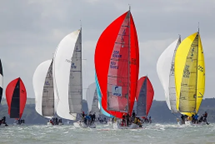
With the limited funds available, the Trust by necessity prioritises our benevolence work. However, in the last year almost £10,000 has also been donated to support serving RAC soldiers to develop their own personal confidence or leadership skills. This has varied from assisting with the expenses of competing as an individual or RAC team in international competitions, to helping to fund a major RAC expedition to the Himalayas.
The application process is available to read on the RAC website, to be found at www.royalarmouredcorps.org.uk/RACMT#main . To satisfy the requirements of our charitable status and to demonstrate due diligence, any military efficiency award from the Trust is conditional upon receiving an illustrated report following the event, the contents of which we can then use to promote our activities.
Honouring the memory of our dead
However, our greatest challenge is continuing to honour the memory of all those officers and soldiers who have laid down their lives for their country whilst serving in the RAC. Few are left who can talk with first-hand experience of the Second World War. For a younger generation it is increasingly difficult to relate to that wartime resolve, but there have been so many conflicts since, Korea, Suez, Borneo, Aden, Northern Island, The Falklands, Iraq, The Balkans, Afghanistan to name but a few. Each conflict has claimed the lives of RAC soldiers, men prepared to make the ultimate sacrifice so that we can continue to enjoy the free society which so many take for granted.
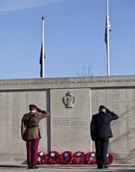 The Royal Armoured Corps Memorial Trust is determined that those men will never be forgotten. We maintain a Roll of Honour, contained in four Books of Remembrance, which record the names of all the 12,600+ men who have died in service since the Corps was originally formed in 1939 right through to the present day. These Books represent the very soul of the Royal Armoured Corps. They are now permanently housed and displayed within a new RAC Memorial, recently created by the Trust, which is located at the very heart of The Tank Museum, in Bovington. This Memorial offers visitors to the Museum an opportunity quietly to reflect on the dreadful human cost of armoured warfare.
The Royal Armoured Corps Memorial Trust is determined that those men will never be forgotten. We maintain a Roll of Honour, contained in four Books of Remembrance, which record the names of all the 12,600+ men who have died in service since the Corps was originally formed in 1939 right through to the present day. These Books represent the very soul of the Royal Armoured Corps. They are now permanently housed and displayed within a new RAC Memorial, recently created by the Trust, which is located at the very heart of The Tank Museum, in Bovington. This Memorial offers visitors to the Museum an opportunity quietly to reflect on the dreadful human cost of armoured warfare.
The Trust is also responsible for the maintenance of the RAC Memorial Wall, which stands proudly in front of the main entrance to the Museum. Inscribed into the stone are the names of over 300 officers and soldiers from the RAC who have died on operations since 1945. A wreath is laid by the Trust on behalf of the whole Corps at the foot of the Memorial Wall on Remembrance Sunday each year.
Royal Armoured Corps casualties
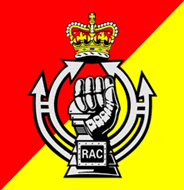 For the Royal Armoured Corps as a whole, no less than 12,619 officers and soldiers are included in that Roll of Honour. This includes all the antecedent Regiments that have been amalgamated over the years, but which form very much the history and legacy of our current regular and Yeomanry Regiments, as well as the Reconnaissance Corps, which was amalgamated with the Royal Armoured Corps in 1944 and disbanded two years later.
For the Royal Armoured Corps as a whole, no less than 12,619 officers and soldiers are included in that Roll of Honour. This includes all the antecedent Regiments that have been amalgamated over the years, but which form very much the history and legacy of our current regular and Yeomanry Regiments, as well as the Reconnaissance Corps, which was amalgamated with the Royal Armoured Corps in 1944 and disbanded two years later.
Every name recorded was a father, a son, a brother or a husband. Each name represents a family broken by grief. To emphasise this human tragedy, five individuals have been selected who died in the Second World War, Korea and Afghanistan and their stories portrayed in a moving video tribute displayed on a large screen within the Memorial. One of the stories portrayed is that of Tpr Cyril Adams, who enlisted in the Fife and Forfar Yeomanry in 1939, survived the retreat and evacuation from Dunkirk, and served throughout the rest of the war with RTR, seeing action in North Africa and NW Europe. He was placed on the reserve, but was then remobilised four years later to serve with the 8th Hussars in Korea. Here he was captured and died whilst a POW in 1951. His remains are now laid to rest at the United Nations Military Cemetery in Busan, South Korea.
Visitors have been observed in tears watching as these five stories have unfolded.
Reaching out to the General Public
Over 230,000 members of the general public visit The Tank Museum every year, whilst over 600,000 visit its website every month. It now boasts over 1,000,000 subscribers to its social media outlets. Thanks to the active support of the Museum and its staff, the RAC Memorial Trust now has its own pages on the Museum’s website, which can be seen at www.tankmuseum.org/roll-of-honour.
The Memorial Trust has digitised the Roll of Honour, so that anybody can do their own research on members of their family or old comrades, to see where and when they died. There is also a direct link to the Commonwealth War Graves Commission site. Simply by copying and pasting an individual’s army number into the CWGC search facility, it is possible to establish exactly where that individual is buried or commemorated, as well as the names of next of kin, home address etc (up until 1948)
This facility is also replicated on the RAC’s own website, where there is a drop-down direct link to the appropriate Tank Museum web pages. Each site also contains additional information about the Trust’s important benevolence and military efficiency support, including advice on how to apply for funding.
Where do we go from here?
Looking to the future, the RAC Memorial Trust wishes to digitise and make available to the public upon request the approx 10,000 individual hand-written Second World War Casualty Cards held by The Tank Museum. These record an individual soldier’s unit, the date and place of his death, and often the circumstances surrounding that death.
Once these records are digitised they will be stored on the Tank Museum’s comprehensive database, and will be available to historians, researchers and especially the family, acting as an essential piece of research material on their lost relative.
In this way the Trust hopes to encourage family members to carry out their own research on their relatives, and then to share with us what they discover. There is a tremendous amount of anecdotal or archival evidence still lurking in the backs of cupboards and drawers across the country which we hope to discover. It is the Trust’s clear desire to record all this evidence as individual stories. We aim to bring the memory of these men to life, so that future generations will never be able to forget their personal sacrifice.
What can you do to help?
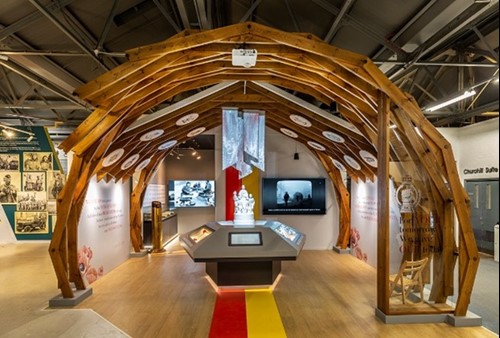 If you are ever back in Bovington, do call in to The Tank Museum. Allow time to read the names on the RAC Wall of Remembrance and make sure you visit the new RAC Memorial within the museum itself. Give us some feedback. The Memorial is not set in aspic, if you think it can be improved, then we want to hear from you.
If you are ever back in Bovington, do call in to The Tank Museum. Allow time to read the names on the RAC Wall of Remembrance and make sure you visit the new RAC Memorial within the museum itself. Give us some feedback. The Memorial is not set in aspic, if you think it can be improved, then we want to hear from you.- Carry out your own research and write up the stories of your fallen relatives or friends. Share those stories with the Trust. It is our intention to add to our Roll of Honour database by making these stories available to the public on-line. This is surely the best way to honour their memory.
- The Trust depends upon the goodwill and generosity of the members of the Royal Armoured Corps for its income. Any amount that you can spare will be put to good use, supporting our own men and women, both serving and retired. Simply scan the QR Code below, which will take you straight through to our Donations Page.
- If you know of an organisation, company or charity that would be interested in sponsoring any Memorial Trust activities, including digitizing the RAC Casualty Cards held in the Tank Museum as a standalone project, then please refer them to the Trust.
- Finally, please consider leaving a legacy to the Royal Armoured Corps Memorial Trust in your Will. There is a guide on how to do this on our pages on the RAC website. This will make a huge contribution towards ensuring that the Trust will be here in another 70 years’ time, still supporting the living as well as honouring the memory of all those members of the Royal Armoured Corps who have laid down their lives in the service of their country.
WE WILL REMEMBER THEM
The Royal Armoured Corps Memorial Trust
Registered Charity No. 1104235
